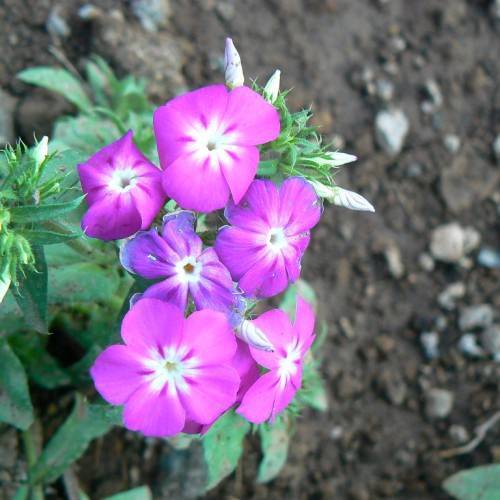
garden phlox
Phlox paniculata 'Laura'
Also Known As - border phlox,common phlox,common phloxCycle:
Herbaceous Perennial
Watering:
Average
Hardiness Zone:
4 - 8
Flowers:
Flowers In Summer
Sun:
Full sun, Part sun/part shade
Soil:
Rocky , gravelly , dry, Well-drained
Fruits:
Fruits In Autumn Ready In Fall
Leaf:
Yes
Growth Rate:
High
Maintenance:
Moderate
Drought Tolerant:
Yes
Care Level:
Medium
watering
Garden phlox (Phlox paniculata 'Laura') should be watered in the early morning or late evening. This allows the foliage to dry throughout the day to reduce the risk of fungal diseases. Make sure to water evenly, saturating the soil throughout the root zone, so that no dry pockets remain. Then allow the topsoil to dry out slightly before watering again. For best growth, the soil should be kept consistently moist during the growing season. In general, this species requires 1-2 inches of water per week.
sunlight
Garden phlox (Phlox paniculata 'Laura') requires full sun for at least 6 hours each day to produce its best blooms. When grown in partly shady conditions the plant will not flower as profusely and the stems may become weak and need staking. It is best to provide the plant with full sun in the morning when the temperatures are cooler and to give some shade in the hotter afternoon.
pruning
Garden phlox (Phlox paniculata 'Laura') should be pruned in late winter or early spring for best results. After the plant has finished flowering, prune it back by up to 1-third of the height, removing the dead or diseased stems, as well as any spent flowers. Be sure to avoid cutting into the new growth that is emerging at the base of the plant. This pruning method also helps to encourage the new, healthy growth, resulting in a more robust and dramatically flowering plant.
